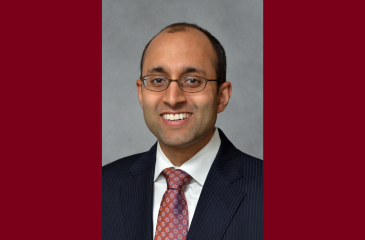University of Minnesota Study Looks at Tobacco Use after Head and Neck Cancer Diagnosis
A new study out of the University of Minnesota looks at how posttreatment tobacco use in smokers with head and neck squamous cell carcinoma (HNSCC) changes over time. Tobacco use is well established as a carcinogen in HNSCC, meaning that the chemicals found in tobacco smoke are known to cause cancers of the mouth and throat.
A review of around 90 patients who were smokers and newly diagnosed with HNSCC found that many continued to smoke after treatment, and those who quit smoking were most likely to do so during the first 6 months after treatment, which may represent an important time to implement smoking cessation strategies.
Smoking during and after treatment for HNSCC has been linked to worse treatment outcomes, including poorer response to therapy, higher rates of cancer recurrence, higher rates of developing a second mouth or throat cancer, and decreased overall survival.
"Our work demonstrates that, despite being aware that tobacco contributed to the life-changing diagnosis of head and neck cancer, many smokers continue (or re-start) smoking after treatment,” noted Samir S Khariwala, MD, MS, Professor and Chair of the University of Minnesota Medical School’s Department of Otolaryngology-Head and Neck Surgery, as well as a Masonic Cancer Center member.
Eighty-nine smokers with HNSCC completed 24 months of post-treatment follow-up and were included in the study. Fifty-two (58.4%) patients continued to smoke at 6-months post-treatment and 40 (44.9%) patients were still smoking at 24-months post-treatment. The probability of smoking cessation was highest during the first 6-months after treatment, while a higher number of cigarettes smoked per day, a longer duration of tobacco use, and a lower number of prior quit attempts are all associated with persistent tobacco use at 24-months post-treatment.
“This finding reinforces the knowledge that tobacco companies (intentionally) created an extremely addictive product such that many smokers are unable to quit despite their best efforts,” added Dr. Khariwala. “Cigarettes are the rare legal product that kills people when used as instructed. Thus, further regulation is needed to remove nicotine and carcinogens from tobacco products.”
The findings of this study show the need to include aggressive smoking cessation interventions, including behavioral training and medication regimens, for smokers with a new diagnosis of head and neck cancer. These interventions should be targeted specifically within the first 6 months after diagnosis and treatment. Future research will look at self-reported motivations to quit tobacco, identify which smoking cessation interventions are most effective and whether smoking cessation interventions are more effective when implemented between a new head and neck cancer diagnosis and the first 6 months after treatment compared to other time intervals.
-30-
About the Masonic Cancer Center, University of Minnesota
The Masonic Cancer Center, University of Minnesota, is the Twin Cities’ only Comprehensive Cancer Center, designated ‘Outstanding’ by the National Cancer Institute. As Minnesota’s Cancer Center, we have served the entire state for more than 30 years. Our researchers, educators, and care providers have worked to discover the causes, prevention, detection, and treatment of cancer and cancer-related diseases. Learn more at cancer.umn.edu.
